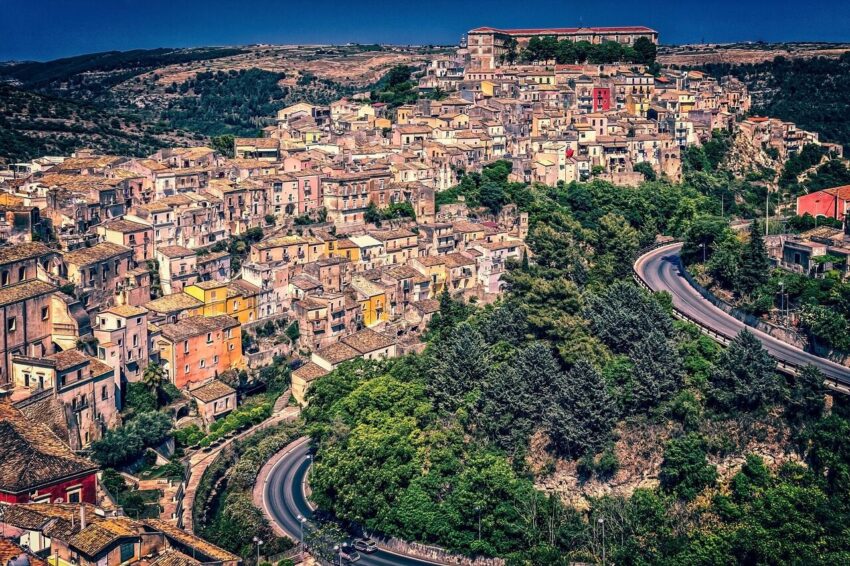Discover Italy’s Secret Pilgrim Trail: Walk Sicily’s Via dei Frati Through Beautiful Madonie Mountains and Medieval Hill Villages


In a quiet revival of Italy’s spiritual heritage, the Sicilian Via dei Frati trail has emerged as a powerful new magnet for travelers in search of solitude, natural wonder, and historical resonance. This 166-kilometre trail, recently restored and reopened to the public, winds through Sicily’s Madonie natural park—offering an experience that sits at the crossroads of slow travel, eco-tourism, and pilgrimage.
While once used by friars, mystics, and medieval missionaries, the trail now attracts modern-day hikers, nature lovers, and cultural tourists eager for immersion away from crowded cities. With its official route starting in Caltanissetta and ending on the Tyrrhenian Sea in Cefalù, the Via dei Frati is increasingly being seen as a southern European alternative to Spain’s Camino de Santiago—an uncommercialized spiritual path still raw with silence, wildlife, and unfiltered beauty.
A Path Rooted in Solitude and Biodiversity
Set against the dramatic backdrop of the Madonie natural park—also known as the Sicilian Alps—this walking trail carves through some of the island’s highest mountains and most diverse ecosystems. First designated a park in 1989 and later recognized by UNESCO for its ecological richness, Madonie spans 40,000 hectares and offers a tranquil, tourist-free wilderness.
Travelers who’ve explored the region note that even after several days of hiking, it’s possible not to encounter another soul—aside from the occasional foraging elder or shepherd. Instead, visitors may find themselves in the company of golden eagles circling overhead, fallow deer standing defiantly still, and rare butterflies flitting across the trails. The absence of human noise has allowed the region’s silence to deepen into a defining feature of the experience, with only birdsong breaking the stillness.
A New Force in Off-the-Beaten-Path Adventure Tourism
The Via dei Frati presents an opportunity for Italy’s tourism sector to broaden its appeal beyond the typical city-and-coast destinations. As travelers increasingly seek out lesser-known landscapes and spiritual journeys, this trail answers a growing demand for off-the-grid experiences.
The journey, often walked in seven to eight stages, passes through ancient hill towns like Gangi, Geraci Siculo, Castelbuono, and Petralia Sottana—some of which were once considered mafia strongholds, now transformed into rustic havens dotted with ruined castles and quiet chapels. Each village offers unique lodging opportunities in unfrequented guesthouses or agriturismos, where the authenticity of local life has not yet been replaced by mass tourism.
These unspoiled villages, often featuring ornate baroque churches and small-town museums, can host travelers looking for deeper connections with place and history. Travelers have reported that they were often the only guests at these accommodations, reaffirming the trail’s isolation and exclusivity.
Reconnecting Spiritual and Nature-Based Tourism in Europe
The restored Via dei Frati was brought back to life by Sicilian psychotherapist Santo Mazzarisi, who, after walking other major pilgrimage routes across Europe, questioned why Sicily lacked one of its own. His restoration effort has become a beacon for slow travel advocates and tourism professionals who recognize the importance of place-based storytelling.
As travelers follow yellow arrows and red-white markers across beech forests, fossil-strewn hillsides, and thousand-year-old oak groves, the route offers a living museum of flora and fauna:
- 65 varieties of orchids
- Monumental holly trees reaching 20 metres tall
- Herds of wild boar, porcupines, and songbirds
These elements are driving the growth of eco-spiritual tourism—a segment that merges ecological appreciation with contemplative walking. With the trail culminating in the coastal town of Cefalù, home to a UNESCO-listed Norman cathedral, the experience seamlessly blends religious heritage with seaside leisure.
Global Trends in Hiking and Wellness Travel Boost the Trail’s Future
Tourism experts are increasingly noting how walking holidays across Europe are attracting a wide demographic—from wellness seekers and retired professionals to digital detoxers and solo travelers. The Via dei Frati, with its scarcity of other hikers, is uniquely positioned to appeal to all of these audiences.
Spring and autumn are considered the best times to visit—spring for wildflowers and religious festivals, autumn for the rutting stags and cactus-laden hillsides. The upcoming Holy Week (13–20 April 2025) is being promoted by local organizers as a peak time to walk the trail, with Caltanissetta’s life-size Resurrection statues and processions offering a visually stunning start to the journey.
Infrastructural Simplicity Adds to the Trail’s Charm
Unlike overly developed trails, the Via dei Frati maintains an organic simplicity. Trail signs are daubed on rocks and trees, and the absence of formal infrastructure keeps the experience intimate. Each day, the path shifts from paved lanes to cattle tracks and into hidden wooded routes, giving walkers a sense of discovery and timelessness.
Travelers often carry daily picnics prepared by their hosts and dine in nature, rather than relying on cafes or rest stops. The trail itself passes through abandoned chapels, hidden woodlands, and mountainscapes where ash, wild pear, and juniper trees dominate the scenery.
Cultural Encounters Enrich the Journey
Even in its quietest corners, the trail offers moments of deep cultural connection. In Geraci Siculo, for instance, travelers have been welcomed by local librarians who unveil 15th-century religious manuscripts, offering a time-travel-like window into the region’s monastic past. Similarly, villages like Castelbuono host guesthouses that serve local gelato made from ash tree sap—known as manna or “white gold”—a regional delicacy tied to centuries-old agricultural tradition.
The authenticity of these experiences is drawing a new wave of cultural tourists who value depth over convenience. For many, the Via dei Frati offers not just a physical journey, but a personal rediscovery of slowness, intention, and presence.
Strategic Implications for Italy’s Tourism Sector
The trail has the potential to position Sicily not just as a summer beach destination, but as a year-round cultural and ecological escape. Local operators like Inntravel and Esplora are already tapping into this opportunity by offering guided and self-guided walking tours tailored for international visitors.
This emergence of the Via dei Frati reflects a broader trend: the return of rural tourism. As global travelers turn away from over-touristed cities and seek new types of enrichment, this trail offers Sicily—and Italy at large—a chance to shine in a fresh, sustainable light.
Tourism boards and regional planners are likely to see the Via dei Frati as a blueprint for revitalizing rural economies while preserving cultural and ecological integrity. It also invites collaborations with wellness retreats, slow food networks, and heritage conservation organizations.
A Pilgrimage Trail for the Modern Soul
From the snowy peaks above Gangi to the sparkling waters of Cefalù, the Via dei Frati is more than a hike—it is a story, a rhythm, a pause. It reminds global travelers that the real magic of a journey lies not in the destination, but in the quiet moments between.
The post Discover Italy’s Secret Pilgrim Trail: Walk Sicily’s Via dei Frati Through Beautiful Madonie Mountains and Medieval Hill Villages appeared first on Travel And Tour World.






